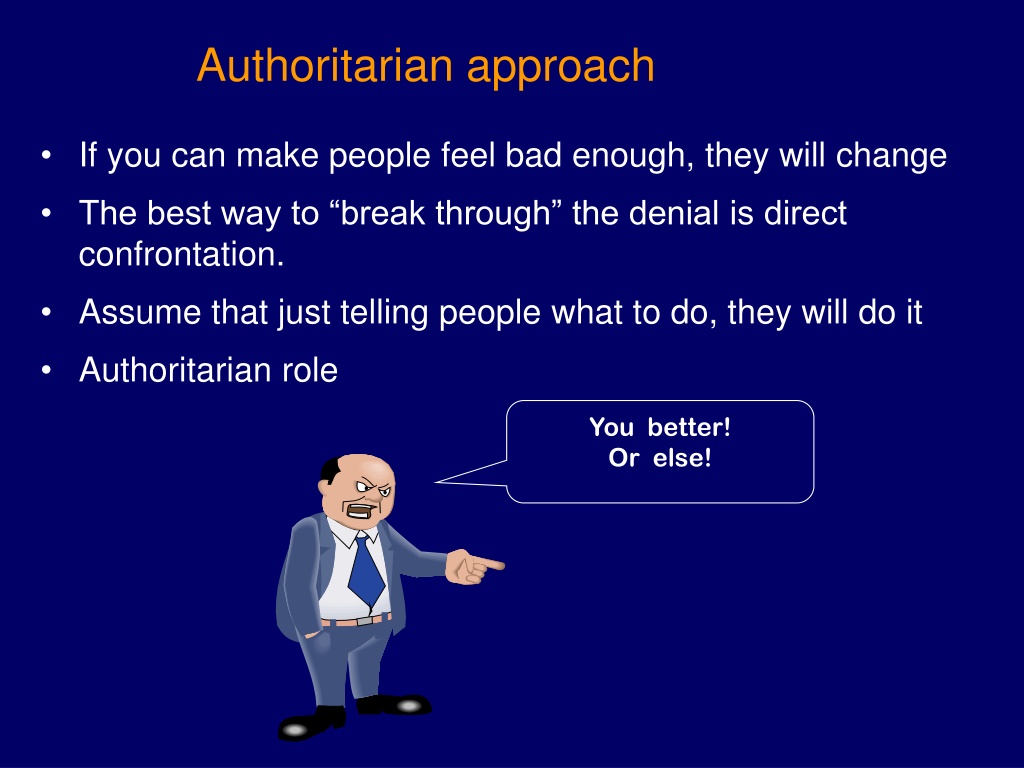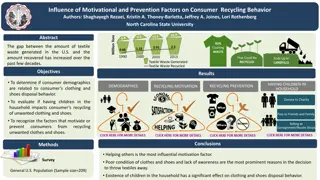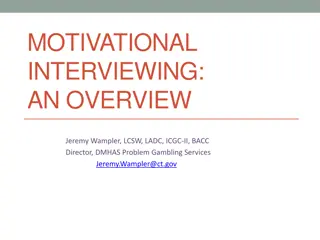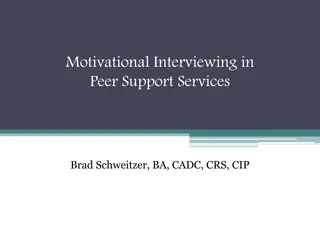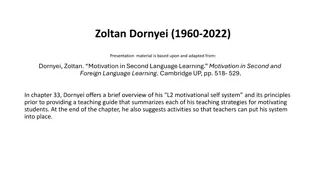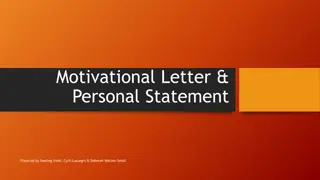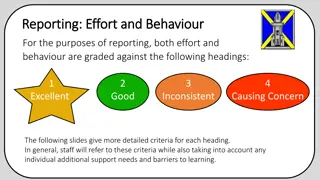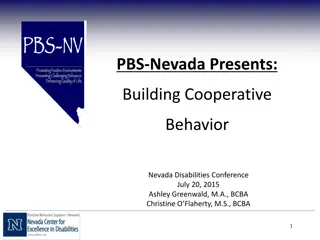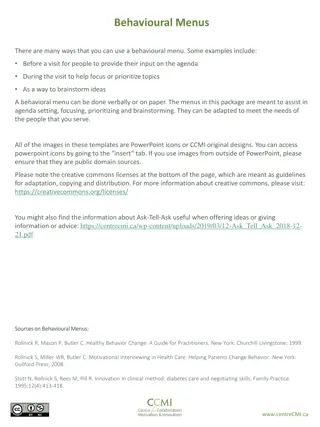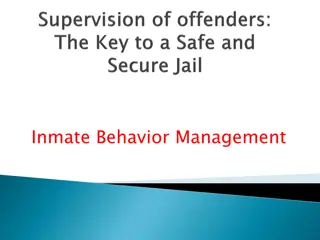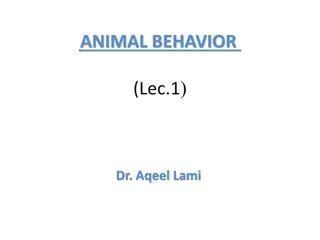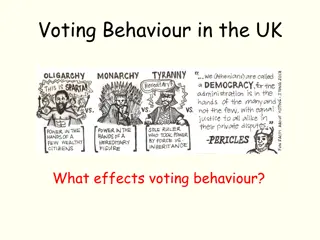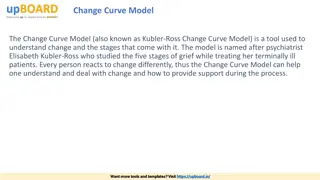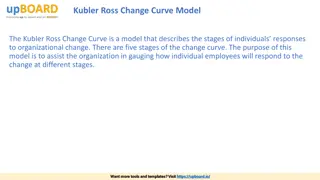Understanding Motivational Approaches in Behavior Change
Motivational approaches emphasize empathy, respect, and exploring discrepancies between current behavior and life goals to help individuals recognize the need for change. By creating a supportive and non-confrontational atmosphere, these approaches aim to empower clients to make positive changes at their own pace.
Download Presentation

Please find below an Image/Link to download the presentation.
The content on the website is provided AS IS for your information and personal use only. It may not be sold, licensed, or shared on other websites without obtaining consent from the author. Download presentation by click this link. If you encounter any issues during the download, it is possible that the publisher has removed the file from their server.
E N D
Presentation Transcript
Authoritarian approach If you can make people feel bad enough, they will change The best way to break through the denial is direct confrontation. Assume that just telling people what to do, they will do it Authoritarian role You better! Or else!
Motivational approach Positive approaches and gentle persuasion are more effective than confrontation Help people to recognize and deal with present and possible future problems An accepting and safe atmosphere Listen rather than tell You can help persuade, while at same time being sensitive You are knowledgeable supporter--nonjudgmental partner
Motivational approach Recognizes that people are ambivalent about change. Feeling two ways about something. Start where the client is Explore client beliefs without labelling them Helping people change involves increasing their awareness of their need to change Work with client who presents reasons for change
Motivational approach I. Express empathy and respect Accepting clients feelings and beliefs without judging, criticizing, blaming Accepting not same as approval or agreement Reflect back what you hear so client feels understood and cared about. Check out whether you really understood the client Summarizing is an important way of gathering together what has already been said, making sure you understood the client correctly, and preparing the client to move
Motivational approach II. Explore discrepancies In the client s mind there may be a gap between current behaviour and life goals May be differences between client's present behavior and broader goals important to client--hopes for the future Clarify important goals for the client Explore the consequences or potential consequences of the client s current behaviours. Helping client to balance decisions: what the benefits and negatives of either a current behavior or a future behavior
Motivational Approach III. Avoid arguments, but offer new perspectives Can gently persuade, raise other points of view Avoid confrontation, labels If conflict arises, stop and find another way to proceed Invite, but do not impose, new perspectives Invite clients to consider alternatives Engage client as valuable resource for coming up with solutions
Motivational Approach IV. Support self-efficacy Self-efficacy: person's belief in their ability to succeed with a task Value the client as a resource for finding solutions to problems The client is responsible for choosing and carrying out personal change
Motivational Approach: Strategies Use open-ended questions: "You seem to have some concerns about telling your partner you are HIV positive. Tell me more about them. Listen reflectively; Summarize what you understand: "So you are worried that if I tell your souse they will be angry". Be positive and supportive: "That must be difficult for you"; "That's a great suggestion" Encourage client to voice his/her concerns and intentions: "I've got to find a way to change this situation".
Counselling Clients: Boundaries As professionals, you must treat everyone the same, even if you have a previous relationship with them. You should be friendly, but there are limits to a personal relationship. You should not share money, have a sexual relationship. Your relationship must remain professional Your job is to help the client with their needs. The client is not there to help you with your needs.
Counselling: Confidentiality You must treat all information and anything else heard as confidential Meet in a place where there is privacy, that you and the client agree upon Do not disclose any information to anyone outside the project unless the client gives their permission Do not discuss clients with your friends, family or neighbors Do not discuss clients in public places If someone asks you for information, say I cannot talk about this. If they push, refer them to your JN+ supervisor
